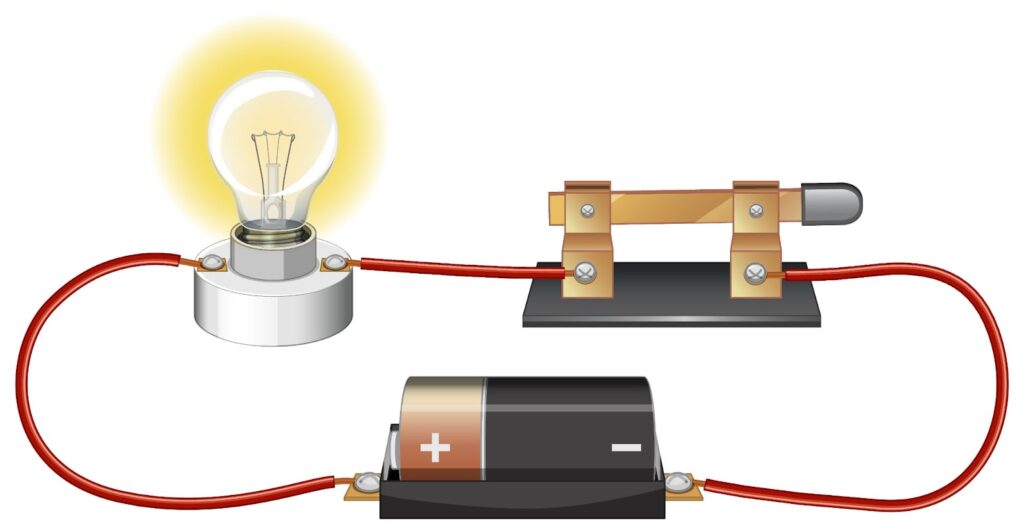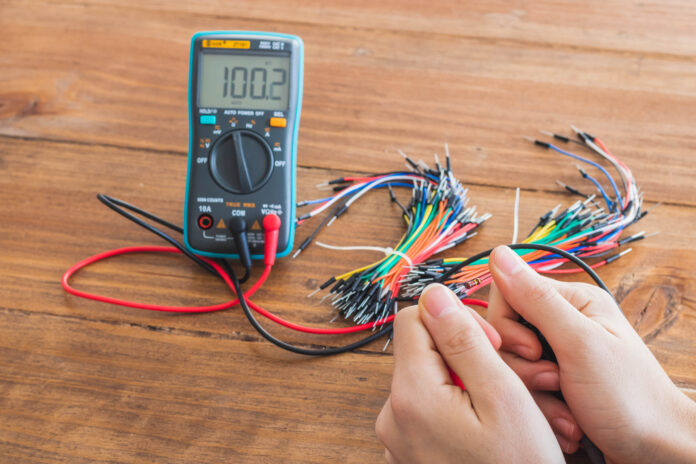In the world of electronics and electrical engineering, understanding the fundamental units of measurement—amps, watts, volts, and ohms—is crucial. These terms describe different aspects of electricity, and they work together to define how electrical systems operate. Whether you’re working on a simple circuit or designing complex electronic devices, knowing how these units interact will help you make informed decisions about power usage, energy efficiency, and safety.
This guide will explore what amps, watts, volts, and ohms are, how they relate to each other, and why they’re important in both everyday applications and specialized electrical systems.
What is an Amp?
Ampere (A), or amp, is the unit of measurement for electrical current. Current refers to the flow of electric charge through a conductor, typically a wire. An analogy often used to explain current is water flowing through a pipe: the faster the water flows, the higher the current. Similarly, the more electric charge that flows through a circuit in a given time, the higher the electrical current.
How Amps Work
In practical terms, current flows when there’s a difference in electrical potential between two points in a circuit. This potential difference, which we’ll explore in the volts section, causes electrons to move, creating an electrical current. The amount of current flowing is measured in amps.
For example, a 1-amp current represents the flow of one coulomb (a unit of electric charge) per second through a conductor. Large currents are often expressed in milliamps (mA), where 1,000 milliamps equal 1 amp.
Why Amps Matter
Knowing the current in a circuit is essential for determining how much energy is flowing and ensuring the circuit can handle that energy without overheating or becoming damaged. Devices are typically rated for a specific current, and exceeding that can lead to safety hazards such as electrical fires or equipment failure.
What is a Volt?

Volt (V) is the unit used to measure electrical potential difference or voltage. Voltage is what pushes electric charge through a conductor, much like water pressure pushes water through a pipe. It’s often described as the “force” that drives current, even though technically it’s the potential for work to be done by the electric charge.
Understanding Voltage
Voltage can be thought of as the difference in electrical potential energy between two points in a circuit. One point is at a higher potential than the other, and this difference creates a “push” that drives electrons through a conductor.
For example, a standard battery has a certain voltage—commonly 1.5V or 9V. If you connect a wire between the positive and negative terminals of a battery, the difference in voltage between the two terminals causes current to flow through the wire.
Voltage in Daily Life

In everyday terms, voltage is what powers your electronic devices. Different devices require different voltages. For instance, a smartphone charger typically provides 5V, while household electrical outlets in the U.S. deliver 120V.
Why Voltage Matters
Voltage is critical because it determines the amount of electrical potential energy available to move electrons. If the voltage is too low, there won’t be enough energy to power a device. If it’s too high, it can damage sensitive electronics or create dangerous conditions in electrical systems. Understanding the voltage requirements of various devices and systems helps ensure safe and efficient operation.
What is a Watt?
Watt (W) is the unit of measurement for electrical power. Power describes the rate at which electrical energy is used or transferred. In simpler terms, watts tell you how much energy is being consumed or produced over time.
The Relationship Between Watts, Amps, and Volts

Watts can be calculated using both amps and volts through the following equation:
Power (Watts)=Voltage (Volts)×Current (Amps)\text{Power (Watts)} = \text{Voltage (Volts)} \times \text{Current (Amps)}Power (Watts)=Voltage (Volts)×Current (Amps)
For example, if you have a device that operates at 10 volts and draws 2 amps of current, the power consumed by the device would be:
10V×2A=20W10V \times 2A = 20W10V×2A=20W
This formula shows that power is directly proportional to both current and voltage. If you increase the voltage or current, the power consumed increases as well.
Understanding Power Consumption
In practical terms, watts are used to measure how much electricity an appliance or device consumes. For instance, a 100-watt light bulb consumes 100 watts of electrical power when turned on. Electrical devices often come with power ratings, indicating how much energy they require to operate efficiently.
This is also why electrical bills are often calculated in kilowatt-hours (kWh), which is a measure of how many kilowatts (1 kilowatt = 1,000 watts) are consumed over time.
Why Watts Matter
Watts help you understand how much energy a device uses and, by extension, how much it will cost to operate. They also allow you to determine whether an electrical system is capable of handling the load. For example, if you have multiple high-wattage devices on the same circuit, you could overload the system, leading to blown fuses or tripped circuit breakers.
What is an Ohm?
Ohm (Ω) is the unit of measurement for electrical resistance. Resistance refers to the opposition that a material presents to the flow of electric current. The higher the resistance, the harder it is for current to flow through a material.
Understanding Resistance
In a circuit, resistance determines how much current will flow for a given voltage. The relationship between voltage, current, and resistance is defined by Ohm’s Law:
Voltage (Volts)=Current (Amps)×Resistance (Ohms)\text{Voltage (Volts)} = \text{Current (Amps)} \times \text{Resistance (Ohms)}Voltage (Volts)=Current (Amps)×Resistance (Ohms)
Using this formula, you can calculate the resistance of a component if you know the current flowing through it and the voltage across it. For example, if a circuit has a voltage of 10V and a current of 2A, the resistance in the circuit would be:
10V=2A×R10V = 2A \times R10V=2A×R
Solving for RRR, you get:
R=10V2A=5ΩR = \frac{10V}{2A} = 5\OmegaR=2A10V=5Ω
Importance of Resistance

Resistance is a critical factor in controlling the flow of electricity in a circuit. Different materials have different resistive properties—conductors like copper have low resistance, while insulators like rubber have high resistance.
Components like resistors are used in electronic circuits to control current flow, protect sensitive components, and divide voltage. For example, in LED circuits, resistors are often added to limit the current and prevent the LED from burning out.
Why Ohms Matter
Understanding resistance is crucial in designing and maintaining electrical systems. High resistance can cause devices to underperform or overheat, while low resistance can lead to excessive current flow, which can damage components. By managing resistance in a circuit, you can control the amount of current that flows and ensure that your devices operate safely and efficiently.
How Amps, Volts, Watts, and Ohms Work Together
Amps, volts, watts, and ohms are all interconnected. Understanding how they relate to one another is essential for building and troubleshooting electrical circuits. The key relationships between these units can be summarized through Ohm’s Law and the power equation:
Ohm’s Law:
Voltage (V)=Current (I)×Resistance (R)\text{Voltage (V)} = \text{Current (I)} \times \text{Resistance (R)}Voltage (V)=Current (I)×Resistance (R)
This formula explains how voltage, current, and resistance are related. If you know any two of these values, you can calculate the third.
Power Equation:
Power (P)=Voltage (V)×Current (I)\text{Power (P)} = \text{Voltage (V)} \times \text{Current (I)}Power (P)=Voltage (V)×Current (I)
This shows the relationship between voltage, current, and power. If you increase the voltage or current, the power consumed by a device increases.
For example, if you’re designing a circuit, you can use these formulas to calculate the required power, current, and resistance to ensure everything operates correctly. If you want to power a device with a 10V battery and the device needs 2 amps to run, you can calculate the power as 20W. To ensure the circuit is safe, you’ll also need to calculate the appropriate resistance to control the current flow.
Practical Applications of Amps, Volts, Watts, and Ohms
In Everyday Devices
In everyday life, these units are critical for understanding how much power your devices consume and ensuring your electrical systems are safe and efficient. For instance, knowing the power (in watts) that an appliance uses allows you to estimate its energy consumption and cost over time.
If you’re setting up a home theater system, for example, you need to ensure the electrical outlets and circuit breakers can handle the combined wattage of all the devices. Exceeding the capacity of the system could cause a breaker to trip or, worse, create a fire hazard.
In Engineering and Electronics Design

For engineers and electronic designers, these units are foundational to creating everything from simple circuits to complex systems. Understanding how to manipulate current, voltage, resistance, and power enables the design of efficient and reliable circuits.
For example, in designing a power supply for an electronic device, engineers must calculate the correct voltage and current to deliver to the device while ensuring that resistance and power are properly managed to avoid overheating or excessive energy consumption.
In Power Systems
In large-scale power systems, such as those used in industry or utilities, managing amps, volts, watts, and ohms is crucial for maintaining grid stability, energy efficiency, and safety. Power plants generate electricity measured in megawatts (MW), and the electrical transmission systems must be designed to handle high voltages and currents while minimizing resistance to avoid energy losses.
Conclusion
Understanding amps, volts, watts, and ohms is essential for anyone working with electricity, from hobbyists to engineers. These units are the building blocks of electrical theory and are key to ensuring that devices operate safely, efficiently, and effectively. Whether you’re calculating the power needs for a home appliance, designing a new electronic gadget, or managing a large electrical system, knowing how these units interact will help you make informed decisions and troubleshoot problems effectively.
In summary:
Amps, measure the flow of electric current.
Volts, measure the electrical potential that drives current.
Watts, measure the power consumption or generation.
Ohms, measure the resistance that opposes the flow of current.
These four units are deeply interconnected, and understanding their relationships is crucial for working with any kind of electrical system.
